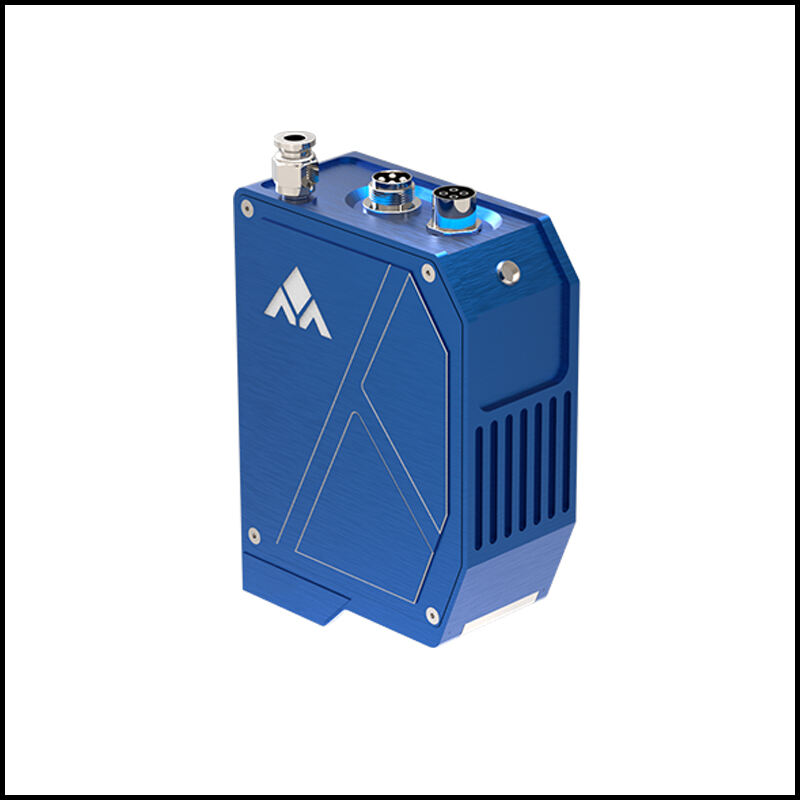Improving the Accuracy of Robotic MIG Welding by Laser Vision Systems
In the robotic MIG landscape, accuracy is paramount. It's important to get every weld right and the same in order to provide strong, uniform connections. Laser vision systems are one such technology that has changed the process of welding. These systems use sophisticated sensors and cameras to track the movements of robots in real time, providing immediate feedback for making micro-corrections as needed — we’ll describe how laser vision systems enhance precision during robotic MIG welding, resulting in higher quality along with more efficient welding techniques.
Laser Defect Inspection for Maximum Welding Accuracy
Laser vision systems incorporate state-of-the-art sensors that scan the welding process and ensure that accurate information is supplied to the robotic welding equipment. Integrating laser vision technology in the welding process allows robots to follow weld seams and adapt their motion on-the-fly. This kind of precision means that every joint land exactly where it should for superior, more reliable connections. Laser vision system It enable robots to deliver the laser with precision – even in complex and difficult operating environments – while maintaining a high welding performance.
Increasing Efficiency and Quality in Robot MIG Welding with Laser Vision Systems
Besides resolution, laser vision systems are key to increasing productivity and quality in [robotic] MIG welding. Laser vision technology gives robots immediate feedback so that they can instantly adjust its movement, which leads to faster and more accurate welding. It is faster and less prone to mistakes and defects from the completed weld. The application of laser vision systems in robotic MIG welding results in better, faster, and more economical welds for production operations.
Laser Vision Systems for Better Welding Processes
A very important advantage of laser vision systems for robotic MIG welding is the possibility to improve the process parameters. Through the continuous monitoring of the welding zone and feedback to the robotic system, laser vision technology can prevent problems from happening. In that way, manufacturers can intervene on the welding process in real-time to guarantee not only each weld, but also each one of them have similar quality means. Long distance laser vision allow manufacturers to control their welding processes, reduce scrap rates and increase production efficiency.
Enhance Consistency and Quality of Welding Wholesale Buyer Use Laser Vision Technology
For the wholesale purchasers in industries like auto, steel, construction and ship building, consistent quality of welded parts is a must. Laser vision helps enhance the welding quality and consistency by offering lap robots just enough direction to ensure accurate welding all of the time. With the purchase of laser vision robotic MIG welding systems, buyers will obtain better quality products, lower production costs and higher customer satisfaction. With prices and standards ever higher, laser vision technology is a game changer for manufacturers who are seeking to provide even more welding accuracy and quality to their wholesale buyers.
there has been provided improvement in accuracy of robotic MIG welding using robotic laser welding system resulting in improved quality and efficiency of produce and consistency thereof. Through the use of laser vision technology, manufacturers are able to optimize their welding operations, decrease production costs and provide high-quality wares for wholesale buyers. As a leader in laser vision system provider for industrial robot application, Minyue Technology is committed to assist the manufactures toward higher levels of precision and quality for their robotic MIG welding.
Table of Contents
- Improving the Accuracy of Robotic MIG Welding by Laser Vision Systems
- Laser Defect Inspection for Maximum Welding Accuracy
- Increasing Efficiency and Quality in Robot MIG Welding with Laser Vision Systems
- Laser Vision Systems for Better Welding Processes
- Enhance Consistency and Quality of Welding Wholesale Buyer Use Laser Vision Technology
 EN
EN
 AR
AR
 HR
HR
 NL
NL
 FR
FR
 DE
DE
 EL
EL
 HI
HI
 IT
IT
 JA
JA
 KO
KO
 PT
PT
 RO
RO
 RU
RU
 ES
ES
 TL
TL
 IW
IW
 ID
ID
 LV
LV
 LT
LT
 SR
SR
 SK
SK
 UK
UK
 VI
VI
 GL
GL
 HU
HU
 TH
TH
 TR
TR
 FA
FA
 AF
AF
 MS
MS
 MK
MK
 HY
HY
 AZ
AZ
 KA
KA
 UR
UR
 BN
BN
 LA
LA
 MN
MN
 KK
KK

